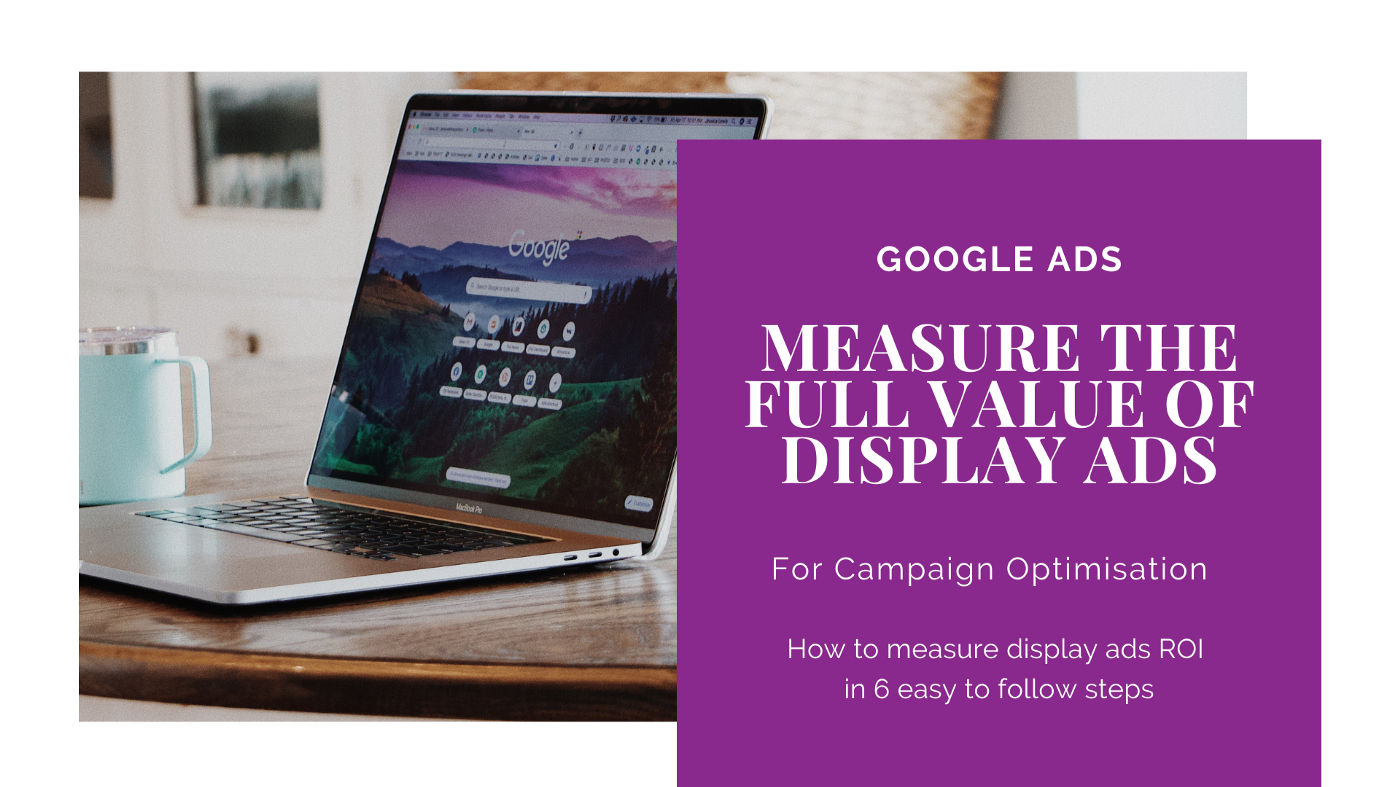How to measure display ads ROI step by step.

On your Google Ads account, click on “Tools and Settings” and then on Conversions. On the new page, click on the (+) sign and add the conversions you want to generate via Google Ads.
If you need help with this step, read this article Set up conversion tracking for your website.
This is how Google documentation defines Data-driven Attribution Model:
Data-driven attribution gives credit for conversions based on how people engage with your various ads and decide to become your customers. It uses data from your account to determine which keywords, ads and campaigns have the greatest impact on your business goals.
By using the data-driven attribution model, you can optimise your bidding based on which keywords, ads, ad groups and campaigns play the biggest role in helping you reach your business goals.
Caveat: You must have at least 3,000 ad interactions in supported networks, and a conversion action must have at least 300 conversions within 30 days to be able to use this attribution model.
If you don’t have enough conversions, one solution could be to expand your Locations, Audiences, Search Keywords, or include more conversion actions (as SMART goals or page_views).
Attribution reports show the paths customers take to complete conversions. Such insights into how advertising efforts work together to create conversions can be used for optimisation purposes. In Google Ads, click on “Tools and Settings”, then on “Attribution” under the “Measurements” Menu.
Top path: which campaigns, keywords, devices, and networks deliver the highest number of conversions.
Keep in mind that what counts is not the number of conversions but the associated value of each conversion (which you can edit in “Tools & Settings” > “Measurement” > “Conversions” > “Conversion Actions”).
Path metrics: how long it takes to convert.
You expect a website traffic campaign to generate a conversion (time/page) in less than 2 days. And a lead-gen to take up to 5–10 days as users might need to consider the benefits multiple times before converting.
Assisted-conversions: If you are re-targeting, you expect previous campaigns to contribute to the final conversion. It’s also worth finding out if multiple campaigns work together to deliver conversions (and what percentage).
Model Comparison: which model delivers the highest number of conversions? Choose that model to optimise your campaigns (if last-click delivers the highest number of conversions, that campaign needs to be shown at the end of the customer’s journey)
Switch to DDA: apply the Data-Driven Attribution model if possible. If you cannot because the number of conversions is below 3000 impressions a month, optimize your campaign settings to increase the number of conversions.
Once you have set up the conversion tracking, you can add reporting columns to determine how the ads generated valuable customer actions.
The ‘Conversions’ column shows the number of conversions based on tracking settings. You can use this column to see how often your ads led customers to actions valuable to your business.
Besides standard conversions metrics such as value/conversion (total conversions, or time of conversion), video campaigns also include the column ‘View-through conversions’ which records the customers that see but don’t interact with the ad but later complete a conversion. This is particularly useful if you are using a video campaign as a brand-awareness campaign.
For video ads, a “view-through conversion” is counted when someone watches 30 seconds (or the whole ad if it’s shorter than 30 seconds) or clicks on a part of the ad.
In addition, ‘Engaged-view conversions’ are counted when a user watches at least 10 seconds of a skippable in-stream ad and then converts. The length of a conversion window depends on the type of campaign:
- TrueView for action campaign: three days
- App campaign for installs: two days
- App campaign for engagement: one day
- Display campaigns: three days
A conversion window is the time between an ad interaction and a conversion. If you are not sure what conversion window to choose, check out the time lag report in your attribution reports (section #3).
This report shows you the time between ad interactions and conversions. Knowing this, you’ll have a better idea of how long your conversion window should be. When starting, you can use the default window of 30 days.
In order for Analytics to display details about your Google Ads campaigns, you must do one of the following:
- Enable auto-tagging. This is the recommended approach and ensures that you get the most detailed Google Ads data. This option automatically imports Google Ads data into Analytics.
- Manually tag all your keyword final URLs with tracking variables.
The combination of Google Ads data with the information provided by Analytics, allows to follow what action users took after they clicked on an ad.
